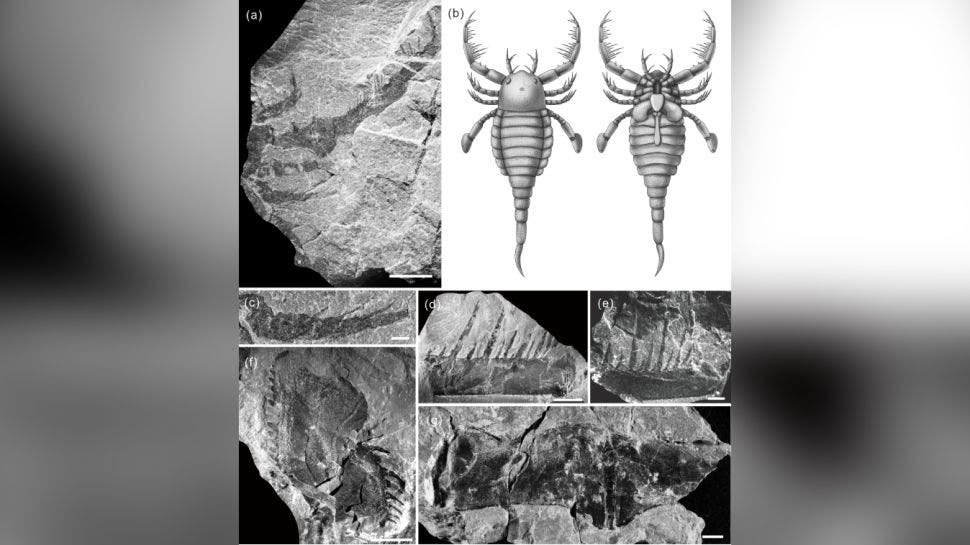Two hundred million years before dinosaurs emerged, sea scorpions were the bad boys of the sea. Researchers have now described a fossil dating from between 443 million and 419 million years ago that was perfectly equipped to take down every creature it encountered in the waters.

Eurypterids, as the sea scorpions are called, came in many shapes and sizes — and all were fierce predators. They ranged in size from just a few inches to the size of a human, and they probably struck fear into the hearts of all creatures in the sea (although not that many creatures had evolved proper hearts at the time).
Doctoral researcher Wang Han and Professor Wang Bo from the Nanjing Institute of Geology and Palaeontology of the Chinese Academy of Sciences (NIGPAS) discovered a fossil of the eurypterid in southern China, in an area that was once part of an ancient continent called Gondwana.
Hundreds of millions of years ago, almost all the planet’s landmass was clumped together in a supercontinent called Pangea. At some point, Pangea broke into two continents called Laurasia and Gondwana, which continued to break apart into the continents we see today on the globe. All the previous fossils previously discovered from this group came from Laurasia, this is the first one from Gondwana.
The fossil dates from a period in the Cambrian called the Silurian, a very warm period when land flora and fauna were just starting to diversify. In particular, the fossil belongs to a group of sea scorpions called the “Mixopteridae”. We don’t know much about this group, and what little we know, comes from fossils described almost a century ago.
“Our knowledge of mixopterids is limited to only four species in two genera, which were all based on a few fossil specimens from the Silurian Laurasia 80 years ago,” said Prof. Wang.

The newly-discovered creature, named Terropterus xiushanensis, had barbed limbs, which were presumably used like a “catching basket” for capturing prey, a technique also used by whip spiders today. Other modern species of spiders use the same appendages to transfer sperm from the male to the female.
Researchers believe there are more fossils related to T. xiushanensis just waiting to be found, and finding these could help us better understand how life evolved in our planet’s geological past.
“Our first Gondwanan mixopterid — along with other eurypterids from China and some undescribed specimens — suggests an under-collecting bias in this group,” the researchers write in the study. “Future work, especially in Asia, may reveal a more cosmopolitan distribution of mixopterids and perhaps other groups of eurypterids.”
The study was published in Science Bulletin.






